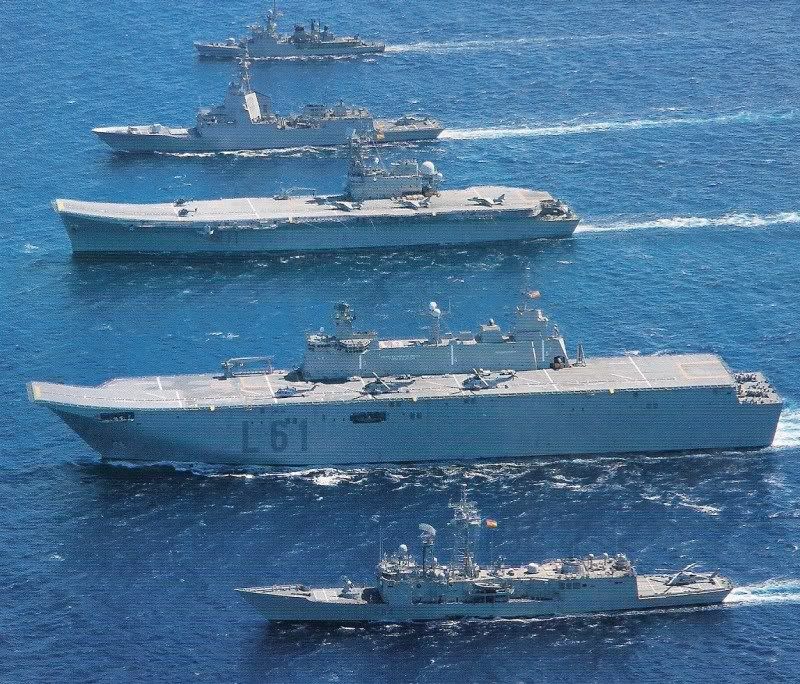Lo que dijo un ingeniero de Navantia en Paris (Euronaval) en 2010.
PARIS - Among the new design concepts making their debut at the Euronaval show here are two trimarans whose striking appearance attracted considerable attention.
Spain's Navantia, designer and builder of a wide range of warships, presented its Multimission Future Frigate, or F2M2. The stealthy ship at first glance looks like a combination of two new American designs, but Navantia naval architect Juan de la Cueva insisted it is intended for different uses.
"We are not thinking of the F2M2 as a littoral combat ship [LCS]," de la Cueva said.
"This is intended as a multirole frigate, not for littoral missions."
The F2M2 is not based on a particular government requirement, de la Cueva said, but incorporates a number of concepts and innovations developed in the past few years by Navantia.
The ship, meant to be produced in the 4,500- to 5,000-ton range, is notionally about 140 meters long with a beam of 30 meters and a draft of about 5 meters.
A combined diesel-electric and gas turbine plant featuring two electric motors and one gas turbine would drive three water jets, the outer two being steerable. Speed would be about 30 knots, and a total of 150 personnel could be accommodated.
Forward, the F2M2 presents a conventional frigate bow with a medium-caliber gun and vertical launch system. The superstructure, however, bears a striking resemblance to the U.S. Navy's DDG 1000-class destroyer, with angular, flat-sided faces that incorporate all the ship's sensors. No masts or sensors project from the superstructure block; a single exhaust is located on the topmost deck, and air intakes are flush with the structure.
The hull amidships widens to a trimaran configuration and reaches its full width over the last third of the ship. A hangar is fitted in the aft part of the superstructure, and the flight deck is spotted for two NH90 helicopters. Space and weight for surface-to-surface missiles is located ahead of the hangar, atop which secondary guns can be mounted.
As in the U.S. Navy's LCS, a mission bay is located beneath the flight deck, with aside door ramp fitted to starboard. Unlike the LCS, though, above-water torpedo tubes are intended to be fitted in the bay.
While a ramp for a rigid-hull inflatable boat (RHIB) was on the model displayed here, de la Cueva said a roll-on/roll-off deck, somewhat similar to that on the Danish flexible support ship Absalon, could be fitted.
The ship would be built with a steel hull, de la Cueva said. Final determination of the superstructure material has yet to be made, he said, although it is likely to be a composite material rather than aluminum.
Navantia will make its official presentation of the F2M2 concept Nov. 4 at Ferrol, Spain, in conjunction with the launch of the Cristobal Colon, last of the F100 Aegis frigates for the Spanish Navy.
http://www.defensenews.com/story.php?i=4992931&c=EUR&s=SEA





